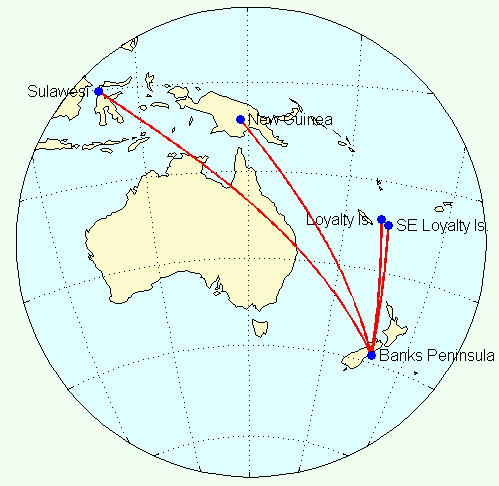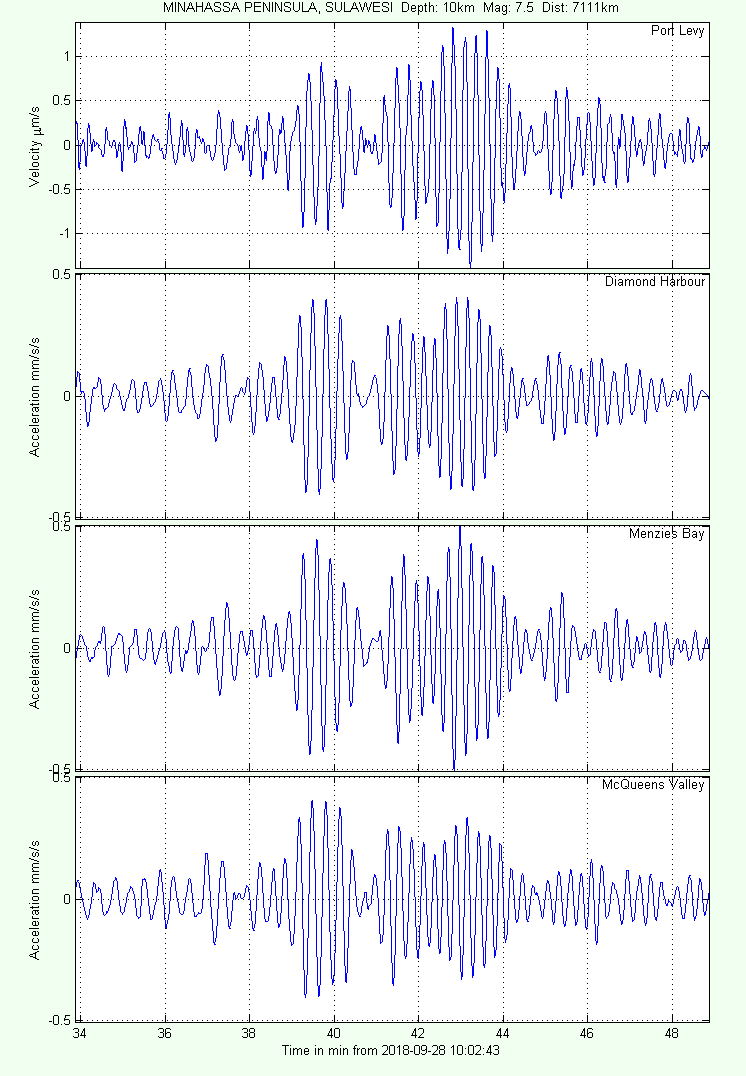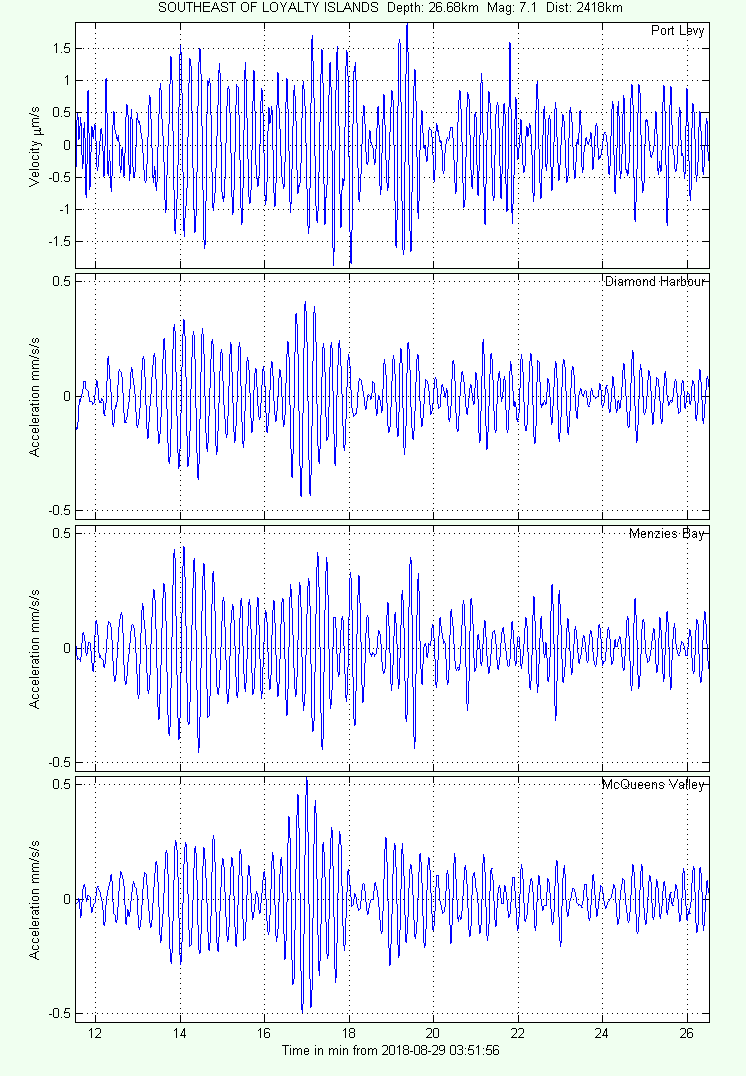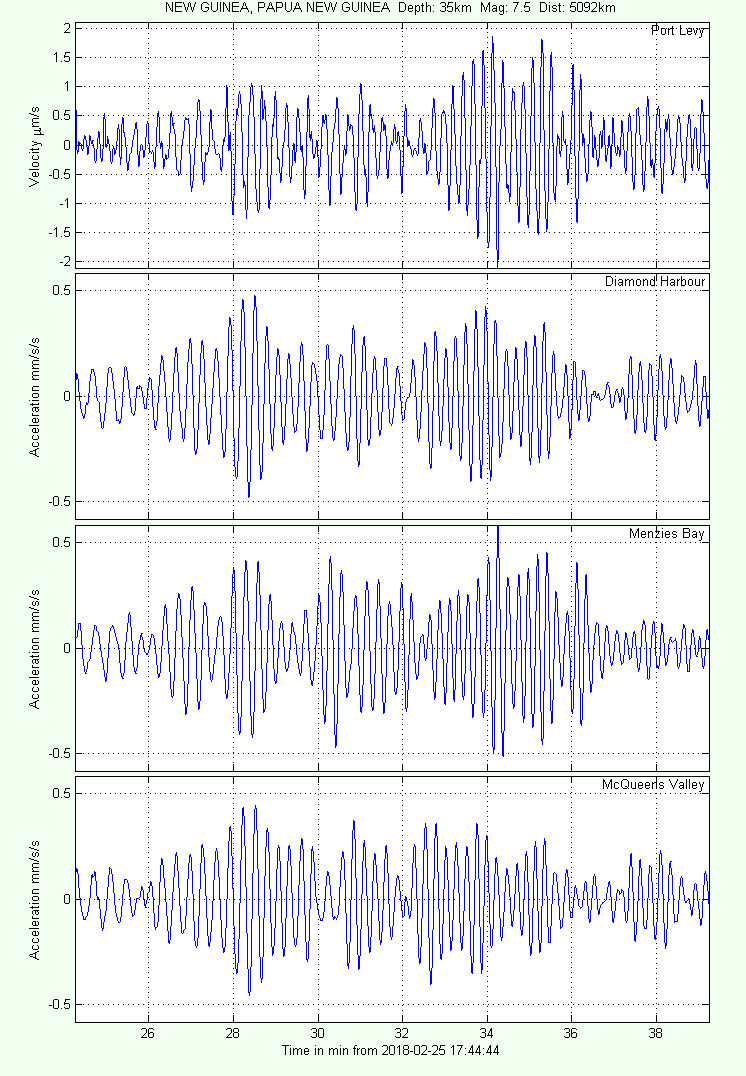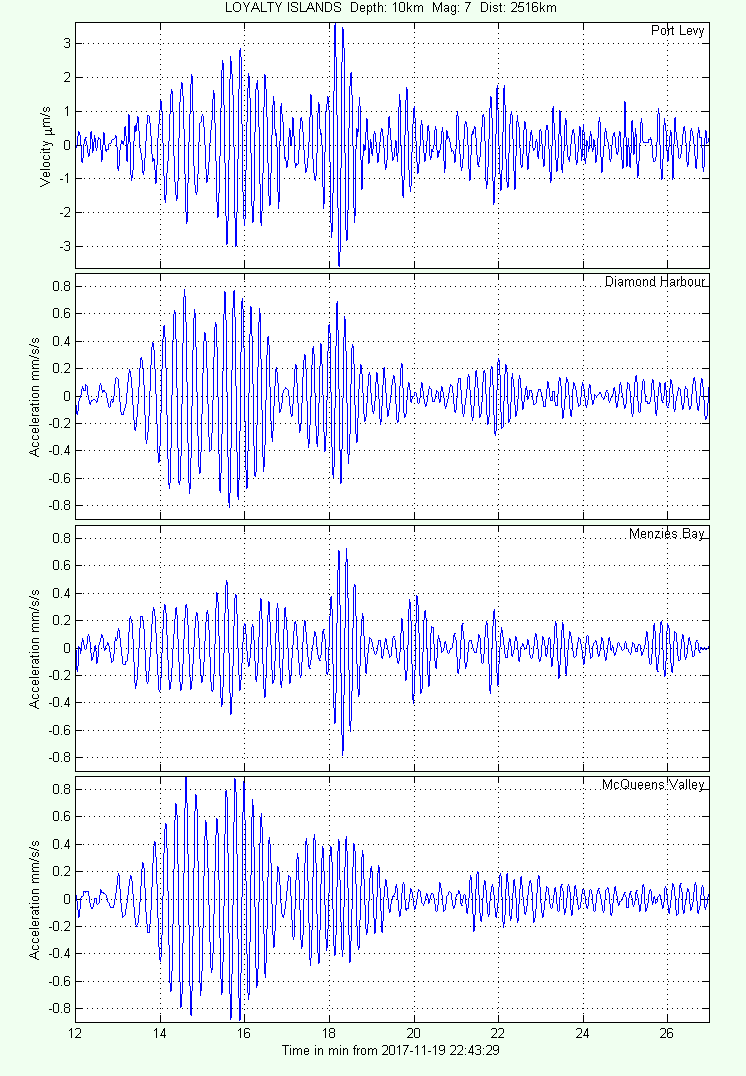 Observations of Earthquake Surface Waves on Banks Peninsula
Observations of Earthquake Surface Waves on Banks Peninsula
After the magnitude 7.1 EQ at Loyalty Islands on 29-Aug-2018, I noticed some unusual long period waves on my Raspberry Shake at Port Levy on Banks Peninsula.
The plot below comes from the SWARM program and shows the time series and Fourier spectrum.
The long period waves started about 8 minutes after the EQ and lasted for about 15 minutes.
They have periods of about 13 s.
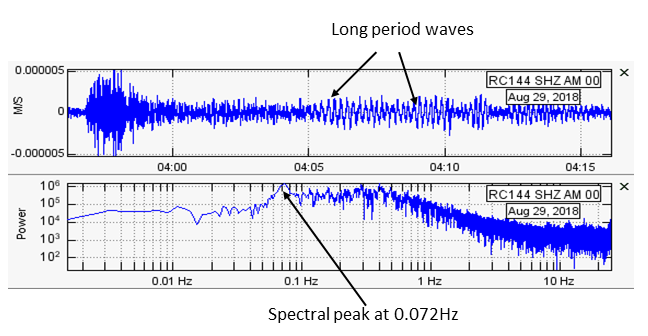
Banks Peninsula Seismometers
There are several seismometers close by to my Raspberry Shake at Port Levy on Banks Peninsula,
on the east coast of the South Island of New Zealand.
They are accelerometers run by
GeoNet.
The instrument at McQueens Valey is a "broadband seismometer" that is designed to measure long waves.
Banks Peninsula consists of two extinct volcanoes that are partly submerged and are covered with a mantle of loess - fine grained, wind-blown silt.
In the igneous rock of Banks Peninsula, earthquakes are felt as jolts, rather than the rolling motion experienced in the nearby city of Christchurch which is on a deep alluvial plain.
Banks Peninsula is sparsely populated and there are few roads, so the background noise at the seismometers located there is low.
This means that small waves that would otherwise be submerged in background noise stand out.
The earthquake record for the Asia-Pacific region
here
was examined for earthquakes that fit the following criteria:
- From 1-Jan-2017 to 1-Oct-2018 (when data from my Raspberry Shake are available);
- Depth less than 50 km;
- Magnitude greater than 6.5.
24 earthquakes fitted those criteria, of which four were followed by long waves, as listed in the table and shown in the plot below.
Earthquakes in the Asia-Pacific region that produced long waves.
| Date & Time |
Location |
Magnitude |
Depth km |
Distance km |
| 2018-09-28 10:02 |
Sulawesi |
7.5 |
10.0 |
7111 |
| 2018-08-29 03:51 |
SE Loyalty Is. |
7.1 |
26.7 |
2418 |
| 2018-02-25 17:44 |
New Guinea |
7.5 |
35.0 |
5092 |
| 2017-11-19 22:43 |
Loyalty Is. |
7.0 |
10.0 |
2516 |
To see the time records at Banks Peninsula sites for a particular earthquake, click on the site in the map.
These records have been produced by:
- Calculating a start time assuming the waves are travelling at 3.5 km/s;
- Retrieving the next 15 min of data from the FDSN database;
- Band-pass filtering using orthogonal wavelet decomposition for timescales between 7.5 and 31 s.
Analysis of Long Waves
The long waves were analysed using zero-crossing analysis.
This identifies individual waves from the times they cross zero in an upward direction.
From this, we get a series of wave heights and periods.
The results for the mean wave period of the highest third of the waves (significant period) are summarised in the table.
The periods vary from earthquake to earthquake, but are consistent for the three accelerometers over each event.
The periods from the Raspberry Shake (Port Levy) are slightly less in each case.
The individual waves from the accelerometers line up almost exactly, indicating they are the same waves.
The waves at Port Levy Raspberry Shake are 90° out of phase because it measures velocity, not acceleration.
So, what are these long waves?
Most likely, they are
Rayleigh and/or Love waves that are circling the earth on the surface.
They can persist for many days after a large earthquake, as shown
here for the SE Loyalty Is earthquake.
Rayleigh waves have up and down motion like ocean waves, so the waves I've presented here from instruments measuring the vertical component are most likely Rayleigh waves.
The broadband recorder at McQueens Valley also measures the horizontal components, which I've analysed here.
Summary
Earthquakes in the Asia/Pacific that are greater than 7 in magnitude and a only few km deep generate long waves.
The waves travel at speeds of about 3.5 km/s.
They are felt on Banks Peninsula as a series of long waves with periods
of 10 to 20 s.
Individual waves are correlated at the various seismomometers on the peninsula.
The long waves persist for 15 minutes or so.
Please address enquiries to:
Derek Goring
Mulgor Consulting
Ltd
Christchurch
New Zealand
1 Hz velocities were recovered from the McQueens Valley recorder for the SE Loyalty Is event and were filtered and integrated to give displacements which are plotted below.
The trajectories of the horizontal waves are also plotted.
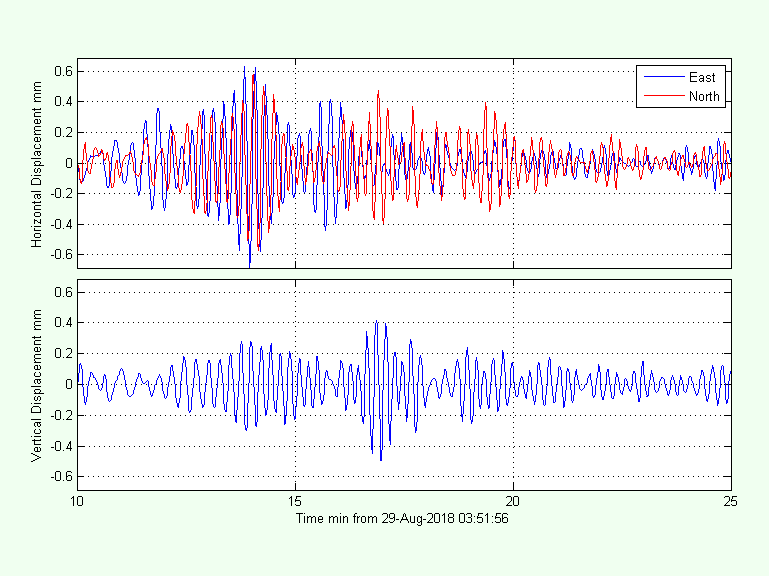
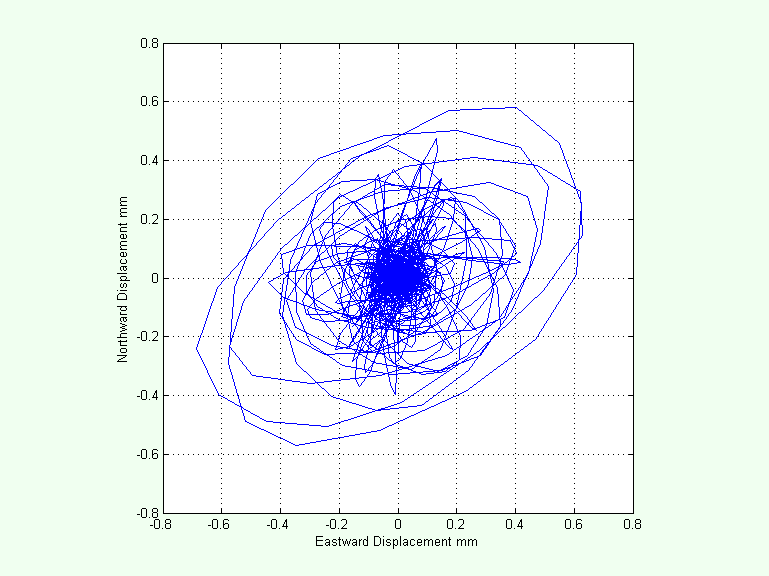
The textbooks tell us that the vertical waves are Rayleigh waves and the horizontal waves are a combination of Rayleigh and Love waves.
 Observations of Earthquake Surface Waves on Banks Peninsula
Observations of Earthquake Surface Waves on Banks Peninsula


